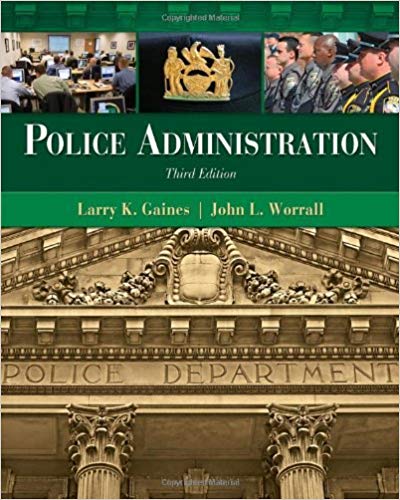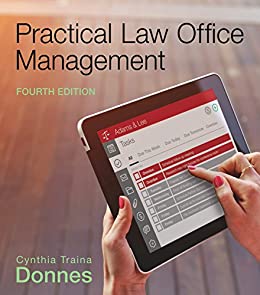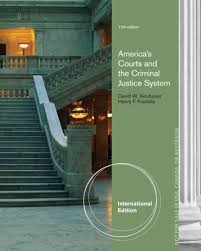Description
Test Bank For Police Administration 3rd Edition By Larry K. Gaines
Chapter 3: Police Administration and Homeland Security
TRUE/FALSE
1. There have been no terrorist incidents in the United States since 9/11.
ANS: F PTS: 1
2.“Homeland security” has been defined as a concerted national effort to prevent terrorist attacks within the United States, reduce America’s vulnerability to terrorism, and minimize the damage and recover from attacks that do occur.
ANS: T PTS: 1
3.A universal and agreeable definition of “homeland security” remains elusive.
ANS: T PTS: 1
4.Terrorism groups are generally sub-national or clandestine.
ANS: T PTS: 1
5.Dissident terrorism is one of the five main types of terrorism.
ANS: T PTS: 1
6.Dissident terrorism is rooted in political ideology, and it generally occurs in countries where one political philosophy dominates.
ANS: F PTS: 1
7.Most terrorism is politically motivated.
ANS: F PTS: 1
8.Most terrorist threats to the United States emanate from radical Islamic groups and left-wing radicals.
ANS: F PTS: 1
9.For it to be considered a weapon of mass destruction, a weapon must have explosive potential.
ANS: F PTS: 1
10.Community policing and homeland security are incompatible.
ANS: F PTS: 1
11.Public education and citizen participation are essential to an effective homeland security strategy.
ANS: T PTS: 1
12.Drinking water is considered a form of critical infrastructure.
ANS: T PTS: 1
13.Police departments and private security companies must partner to effectively prevent and respond to terrorist attacks.
ANS: T PTS: 1
14.Responses to terrorism are “layered” as a result of the local, state, and federal responses.
ANS: T PTS: 1
15.The National Incident Management System is an effort to standardize responses to critical incidents, such as terrorist attacks.
ANS: T PTS: 1
MULTIPLE CHOICE
16.Which of the following is NOT a goal of the National Strategy for Homeland Security?
|
a. |
prevent and disrupt terrorist attacks |
|
b. |
protect the American people, critical infrastructure, and key resources |
|
c. |
continue to strengthen the foundation to ensure long-term success |
|
d. |
pursue diplomatic relations with countries that sponsor terror |
ANS: D PTS: 1
17.The concept of “homeland security” is:
|
a. |
self-evident |
|
b. |
difficult to define |
|
c. |
as old as terrorism itseslf |
|
d. |
understandable only to experts working in the field |
ANS: B PTS: 1
18.Which of the following is the U.S. State Department’s definition of terrorism?
|
a. |
premeditated, politically motivated violence perpetuated against noncombatant targets by sub-national groups or clandestine agents, usually intended to influence an audience |
|
b. |
the calculated use of violence or threat of violence to inculcate fear, intended to coerce or intimidate governments or societies as to the pursuit of goals that are generally political, religious or ideological |
|
c. |
the unlawful use of force or violence against persons or property to intimidate or coerce government, a civilian population, or any segment thereof, in furtherance of political or social objectives |
|
d. |
none of these choices |
ANS: A PTS: 1
19.Common threads associated with terrorism include:
|
a. |
premeditation |
|
b. |
attacks against noncombatants |
|
c. |
political agenda |
|
d. |
all of these choices |
ANS: D PTS: 1
20.Which of the following is NOT a type of terrorism?
|
a. |
state-sponsored terrorism |
|
b. |
religious terrorism |
|
c. |
dissent terrorism |
|
d. |
monotonic terrorism |
ANS: D PTS: 1
21.Which type of terrorism consists of terrorist acts that occur at the direction, directly or indirectly, of the state or government?
|
a. |
dissent terrorism |
|
b. |
political terrorism |
|
c. |
domestic terrorism |
|
d. |
none of these choices |
ANS: D PTS: 1
22.Which of the following refers to terrorist acts that are used to facilitate crime and criminal profits?
|
a. |
criminal terrorism |
|
b. |
political terrorism |
|
c. |
dissent terrorism |
|
d. |
state-sponsored terrorism |
ANS: A PTS: 1
23.Which of the following is true concerning how police departments are incorporating a homeland security focus?
|
a. |
All police departments have a homeland security orientation. |
|
b. |
Only “big city” police departments have adopted a homeland security orientation. |
|
c. |
It is not clear how rapidly police departments are incorporating a homeland security focus. |
|
d. |
Homeland security is not of concern to local law enforcement agencies. |
ANS: C PTS: 1
24.To have an effective homeland security program, a police department must have:
|
a. |
highly-paid administrators |
|
b. |
good working relationships with the community |
|
c. |
dedicated officers |
|
d. |
sufficient civilian staff support |
ANS: B PTS: 1
25.Homeland security public education programs serve to:
|
a. |
reduce fear |
|
b. |
reduce community tensions |
|
c. |
encourage people to share information with the police |
|
d. |
all of these choices |
ANS: D PTS: 1
26.Which of the following is NOT an example of critical infrastructure?
|
a. |
telecommunications |
|
b. |
transportation |
|
c. |
churches |
|
d. |
postal services |
ANS: C PTS: 1
27.Which term describes the duties of various federal, state, and local governments when responsing to a disaster?
|
a. |
layered response |
|
b. |
top-down response |
|
c. |
coordinated response |
|
d. |
national response |
ANS: A PTS: 1
28.Joint Terrorism Task Force members include:
|
a. |
the FBI |
|
b. |
the U.S. Marshals Service |
|
c. |
the U.S. Secret Service |
|
d. |
all of these choices |
ANS: D PTS: 1
29.Terrorism early warning groups have been called:
|
a. |
fusion centers |
|
b. |
intelligence centers |
|
c. |
terrorism prevention divisions |
|
d. |
none of these choices |
ANS: A PTS: 1
30.Fusion centers operate primarily at what level of goverment?
|
a. |
federal |
|
b. |
state |
|
c. |
local |
|
d. |
none of these choices |
ANS: C PTS: 1
COMPLETION
31.__________ has been defined as the unlawful use of force or violence against persons or property to intimidate or coerce government, a civilian population, or any segment thereof, in furtherance of political or social objectives.
ANS: Terrorism
PTS: 1
32.__________ terrorism consists of terrorist attacks that occur at the direction, directly or indirectly, of the state or government.
ANS: State-sponsored
PTS: 1
33.__________ terrorism occurs when a dissenting group uses terrorist activities against its government.
ANS: Dissent
PTS: 1
34.__________ terrorism refers to terrorist acts that are used to facilitate crime and criminal profits.
ANS: Criminal
PTS: 1
35.Threats to the United States emanate primarily from __________ terrorists and right-wing terrorists.
ANS: radical Islamic
PTS: 1
36.In response to the threat of terrorism, some police departments have created __________ divisions.
ANS: homeland security
PTS: 1
37.The term __________ is used to describe such valuable assets as telecommunications, transporation, and banking and finance.
ANS: critical infrastructure
PTS: 1
38.Many police departments maintain __________ response plans for responding to natural disasters, airplane crashes, terrorist attacks, and other such events.
ANS: critical incident
PTS: 1
39.The duties of various federal, state, and local governments when responding to a disaster are known as a __________.
ANS: layered response.
PTS: 1
40.The Department of Homeland Security’s __________ is an effort to standardize responses to critical incidents, including terrorist attacks.
ANS: National Incident Management System
PTS: 1
41.The __________ consists of four steps: planning; organizing, training, and equipping; exercise; and evaluation/improvement.
ANS: preparation cycle
PTS: 1
42.At the root of the National Incident Management System is the __________, or ICS.
ANS: Incident Command System
PTS: 1
43.The __________ is a national, multi-agency organization that has the responsibility of combating terrorist activities in the United States.
ANS: Joint Terrorism Task Force
PTS: 1
44.Since __________ are composed of a variety of first-response personnel, they serve to not only monitor the city for terrorist activities, but they are also involved in the coordination of the initial response.
ANS: fusion centers
PTS: 1
45.Although most terrorist attacks have used conventional weapons and explosives, the greatest threat comes from __________.
ANS: weapons of mass destruction
PTS: 1
ESSAY
46.Explain “homeland security.”
ANS:
Homeland security has been defined as “a concerted national effort to prevent terrorist attacks within the United States, reduce America’s vulnerability to terrorism, and minimize the damage and recover from attacks that do occur.” The National Strategy for Homeland Security consists of four basic goals: prevent and disrupt terrorist attacks; protect the American people, critical infrastructure, and key resources; respond to and recover from incidents that do occur; and continue to strengthen the foundation to ensure long-term success.
PTS: 1
47.Define terrorism.
ANS:
The FBI’s definition of terrorism is: “The unlawful use of force or violence against persons or property to intimidate or coerce government, a civilian population, or any segment thereof, in furtherance of political or social objectives.” The Defense Department’s definition is: “The calculated use of violence or threat of violence to inculcate fear, intended to coerce or intimidate governments or societies as to the pursuit of goals that are generally political, religious or ideological.” The State Department’s definition is: “Premeditated, politically motivated violence perpetuated against noncombatant targets by sub-national groups or clandestine agents, usually intended to influence an audience.”
PTS: 1
48.What are the four common threads that run through all definitions of terrorism?
ANS:
First, terrorism involves premeditation. Acts of terrorism generally are perpetrated through violent acts, but terrorism can also involve other criminal acts. Regardless, these acts are thought-out and they are perpetrated with the intention of having some impact on victims or enemies. Second, terrorists and their acts are motivated by all sorts of political agendas. Terrorists commit many of the same crimes as do ordinary criminals, but terrorists have a political agenda, whereas ordinary criminals commit their acts for financial gain. Third, generally the terrorists’ targets are noncombatants or civilians, but not always. By attacking civilians, the terrorists’ attacks have a more substantial psychological impact on their perceived enemies. Finally, terrorist groups are generally sub-national or clandestine groups.
PTS: 1
49.Explain three different types of terrorism.
ANS:
State-sponsored terrorism consists of terrorist acts that occur at the direction, directly or indirectly, of the state or government. Dissent terrorism refers to situations in which a dissent group uses terrorist activities against its government. Criminal terrorism refers to terrorist acts that are used to facilitate crime and criminal profits.
PTS: 1
50.Offer at least six examples of critical infrastructure.
ANS:
Examples include: information technology; telecommunications; chemicals; transportation; emergency services; postal and shipping services; agriculture and food; public health and healthcare; drinking water and water treatment; energy; banking and finance; national monuments and icons; defense industrial complex; key industry/technology sites; large gatherings of people.
PTS: 1





Be the first to review “Test Bank For Police Administration 3rd Edition By Larry K. Gaines”